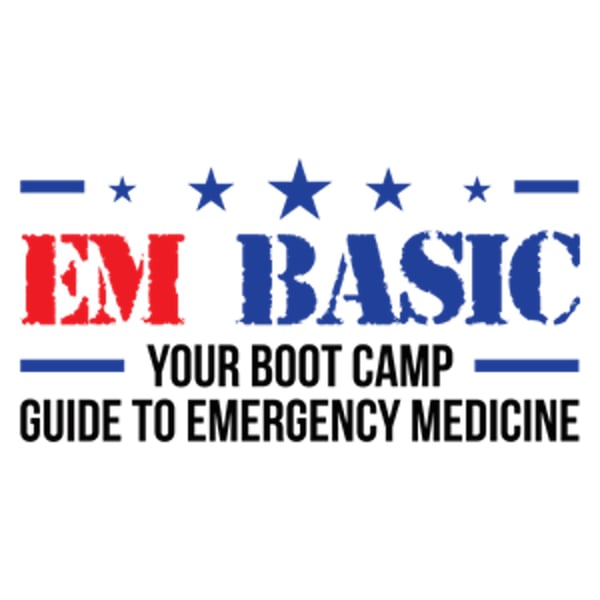EM Basic Essential Evidence- Admission for patients with minor head injury on coumadin- Annals of EM
EM Basic
EM Basic LLC
4.6 • 665 Ratings
🗓️ 3 September 2012
⏱️ 8 minutes
🧾️ Download transcript
Summary
In this episode, we'll talk about a recent article in Annals of Emergency Medicine that has a lot of people talking. This is a study that looked at patients on coumadin (warfarin) who had minor head injuries. The patients were admitted for 24 hours of observation and had a repeat head CT. The study looked at how many patients had bleeding on a repeat head CT and the conclusions were suprising. Should this be our new standard of care? Maybe but maybe not.
Transcript
Click on a timestamp to play from that location
| 0:00.0 | This is Steve Carroll, and you're listening to EM Basic Essential Evidence. |
| 0:04.7 | Today we'll be talking about a relatively recent article in the aisles of emergency medicine. |
| 0:09.3 | The title of the article is, |
| 0:11.2 | Management of Minor Head Injury in Patients Receiving Oral Anticoagulation Therapy, |
| 0:16.6 | a prospective study of a 24-hour observation protocol. |
| 0:20.7 | Once again, this was published in the Annals of Emergency Medicine, June 2012, |
| 0:25.6 | and the first author is Dr. Vincenzo Mendetto. |
| 0:29.2 | I probably mispronounce that, sorry. |
| 0:30.9 | As always, his podcast doesn't represent the views or opinions of the Department of Defense, |
| 0:34.2 | the U.S. Army, or the Fort Hood Post Command. |
| 0:36.8 | So here's the background on |
| 0:37.9 | this issue. Patients on oral antiquaglants, such as warfarin, who sustain even a minor head |
| 0:43.5 | injury, frequently get a non-contrast head CT as part of their workup because intracranial |
| 0:49.2 | hemorrhage is common in these patients. Rates vary anywhere from 7 to 25%. Also, delayed intracranial hemorrhage up to a week |
| 0:57.1 | later has been reported in these patients. So the question is, what is the utility of emitting |
| 1:02.7 | patients on Coumadin with minor head trauma for further observation and a repeat head CT in 24 hours? |
| 1:09.5 | So let's talk first about the study design. |
| 1:11.9 | So this was a single center prospective observational study. |
| 1:15.8 | This means that patients were admitted to a single hospital |
| 1:18.1 | and then followed to see their outcome. |
| 1:21.0 | One important thing to remember is the difference between prospective and retrospective studies. |
| 1:26.3 | Prospective means that you defined a set of study criteria ahead of time, found some way to |
... |
Please login to see the full transcript.
Disclaimer: The podcast and artwork embedded on this page are from EM Basic LLC, and are the property of its owner and not affiliated with or endorsed by Tapesearch.
Generated transcripts are the property of EM Basic LLC and are distributed freely under the Fair Use doctrine. Transcripts generated by Tapesearch are not guaranteed to be accurate.
Copyright © Tapesearch 2025.

